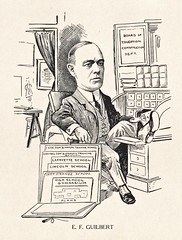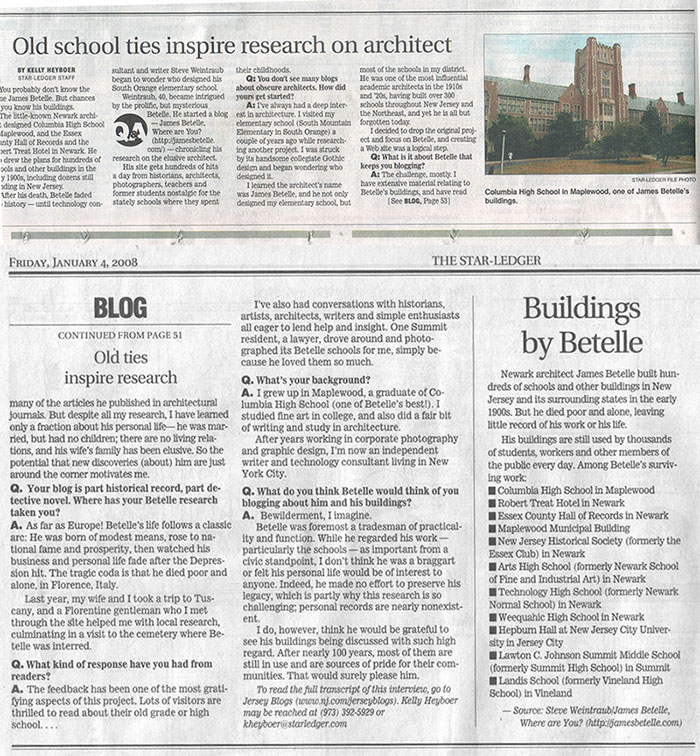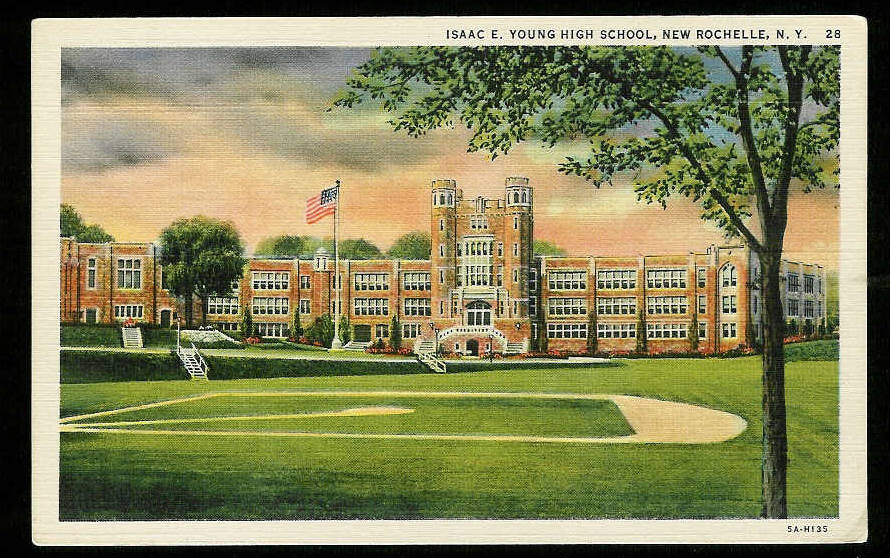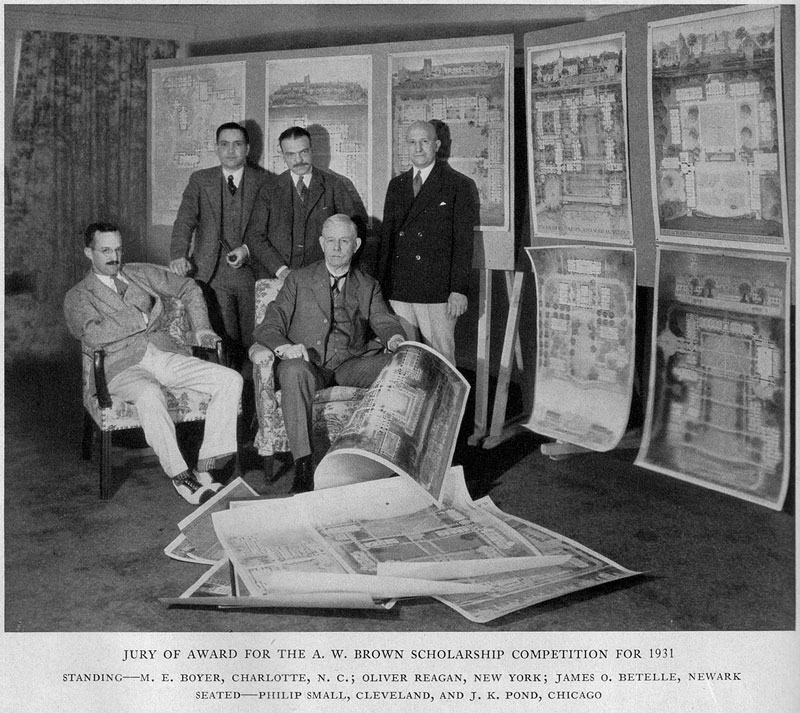Now this is a fun little thing. By sheer luck I’ve found caricature illustrations of both James Betelle and Ernest Guilbert. I’ve had the Betelle drawing for a while, but just recently acquired the Guilbert, so I can now present them as the symmetrical pair they were destined to be.
 Ye Architect of Ye Great Inn
Ye Architect of Ye Great Inn
The illustration of Betelle is from the book A History of Newark and Notable Newarkers, by Thomas Fleming, a noted cartoonist of the day. Written in celebration of Newark’s gala 250th anniversary in 1916, it’s a tongue-in-cheek history of the city, with contemporary figures inserted into historical guise.
Betelle is dressed in puritan garb, standing by his then most celebrated work, the Robert Treat Hotel. He doesn’t seem particularly thrilled in the getup, but the quote does give him respect:
James O. Betelle is the Architect of Robert Treats finest monument – the beautiful Hotel named in his honor. His motto is – “Newark knows how–So does Architect Betelle.”
 A Leg Up
A Leg Up
Guilbert’s drawing (clearly taken from his portrait) is a bit of a mystery. It was part of a folio of dozens of similar caricatures of other notable figures from Essex County (NJ). Sadly it’s neither signed nor dated, but I would place it at about 1914. It doesn’t seem to be Fleming’s work.
Guilbert is shown seated at a roll-top desk at the “Board of Education Construction Dept.”, where he was employed as Newark’s school architect before teaming with Betelle. The casual pose with the leg on the desk is a funny detail; was the artist capturing a trait of Guilbert’s, or simply giving the illustration some visual interest?
 This web site was featured in the New Jersey Star-Ledger on Friday, January 4th. The column, Jersey Blogs, was a Q&A with staff writer Kelly Heyboer conducted in early December.
This web site was featured in the New Jersey Star-Ledger on Friday, January 4th. The column, Jersey Blogs, was a Q&A with staff writer Kelly Heyboer conducted in early December.



